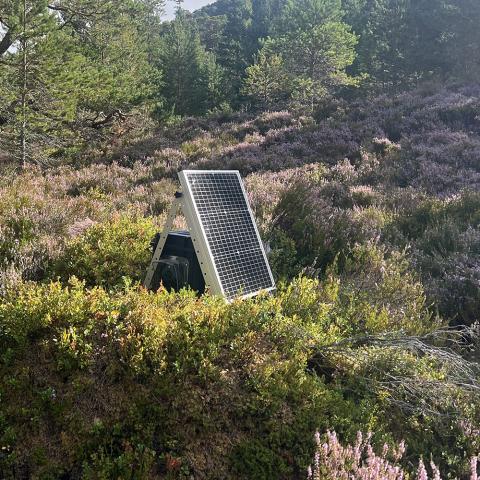Bioacoustic monitoring has been taking place at ECN Cairngorms since 2010 providing data on birds, bats and more recently including whole soundscape monitoring. We have recently added another bird recording sensor at the site. The aim of this monitoring is to better understand how species and ecosystems are responding to environmental change.
Fixed point acoustic sensors provide some important benefits over traditional surveying approaches. In particular they can record 24 hours a day, while replication allows multiple locations to be monitored simultaneously. The major limitation to recording sound is the storage and processing of large volumes of acoustic files. Artificial Intelligence (AI) models such as BirdNet have recently made data extraction and the species idenfication of birds much simpler. Some issues remain, such as incorrect identifications and challenges posed by processing time and the storage of large volumes of data.
In order to improve our outreach, we installed BirdWeather PUC sensors at the site in 2025. Initially a single device was installed in the pine woodland during the spring, followed by three more in various habitats over the summer.
Coupled with a battery-solar system, and 4G Wi-Fi, the devices provide researchers, stakeholders and the wider public with real-time open-access viewing of bird data from the site. Unlike traditional acoustic loggers, these devices upload recorded bird calls to the BirdWeather servers, where they are processed through a BirdNet workflow to be made available online for observing and ground-truthing identifications.
Interested in what birds we’re recording? Then visit the BirdWeather website. The link is to one of the sensors. To view the other sensors, click the cross in the grey box containing sensor details and the other three sensors will be visible on the map. Please note that sensor locations are approximate.
